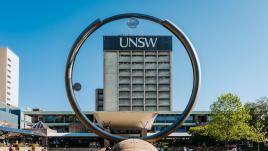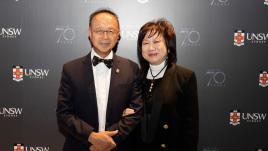New point-of-care rapid testing to prevent the spread of COVID-19
UNSW researchers are fast-tracking the development of a rapid testing technology to diagnose coronavirus almost instantly.
A research project to advance point of care, rapid testing for SARS-CoV-2 led by Scientia Professor Justin Gooding, Co-Director at NSSN and the Australian Centre for Nano Medicine, will more accurately and swiftly detects the virus.
The development of this technology is considered essential to prevent the spread of COVID-19, with the project identified as priority research under UNSW’s Rapid Response Research Fund.
Current testing methods present challenges around time and accuracy
Professor Gooding explains, “around the world, there are two common tests being used to detect the virus, qPCR (laboratory-based tests) and serology point-of-care tests (finger-prick tests).”
qPCR tests are referred to as ‘gold standard’ tests, as they most accurately determine whether a person has the virus at the time the sample was collected. This method detects the virus by testing for viral RNA (ribonucleic acid). However, qPCR requires complex equipment, trained technicians and and it can take days for the result as samples must be transported to a central laboratory, and then analysed.
Serology tests that can be performed at the point of care are much quicker to perform, sometimes using just a finger-prick blood sample and a small test kit and can generate results within 20 minutes. Unlike laboratory tests like qPCR, instead of testing for viral RNA they test for the presence of antibodies that your immune system makes to fight the virus.
However, serology tests require high viral loads to detect the virus (typically seven days’ or more worth of COVID-19 infection) meaning a person could only be diagnosed if they had contracted the virus at least a week before the test is conducted. Even then, a positive would still require a lab test to confirm a diagnosis, resulting in an unmet need for a rapid test that accurately determines the presence of the virus directly.
New technology will be ‘the best of both worlds’
Project collaborators, Professor William Rawlinson, Dr Sacha Stelzer-Braid and Dr Padmavathy Bakthavathsalam, have developed a new approach to detecting viral RNA directly from nasal swabs and is compatible with a handheld portable device such as a digital camera or smartphone.
Professor Gooding says the new rapid testing technology could be the best of both worlds.
"Our new technology has the potential to detect the virus with the accuracy of a qPCR test, but at the speed of a serology test,” he says.
The study utilises dark-field microscopy – a light-based microscopy procedure which produces brightly illuminated objects on a dark background to measure the scattering arising from individual nanoparticles, and which identifies the colour of each nanoparticle using computer algorithms.
“The information from the sensor can be read out using a mobile phone-based microscope and can be rapidly communicated to where it needs to go,” says Professor Gooding.
The integration of the portable device, and digital quantification of the dark field image obtained from the sensor, allows for automated analysis that can reduce the infection risk for healthcare workers and improve turnaround time for virus diagnosis.
Your support for this critical research can save lives and accelerate recovery across society. Give to this project to help change the course of COVID-19.








